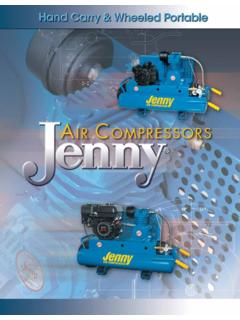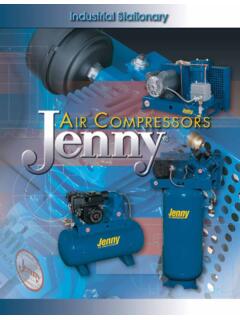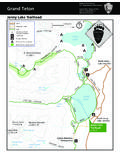Transcription of Pre-K - Jenny Phillips
1 Pre-KLetters & Sounds | Vowels | NumbersColors | Motor Skills | Sorting | Matching | RhymingWri en by Jenny PhillipsA special thanks to the many educators, reading specialists, home school parents, and editors who gave invaluable COURSE 2016 Jenny Phillips | rights reserved. No part of this book may be copied, shared electronically, or reproduced in any way for those outside your home. Jenny PhillipsiiiA child s a tude and perspec ve towards learning are shaped and molded in the preschool years when minds and hearts are most impressionable.
2 Your personal enthusiasm and eff orts in teaching, and the way you go about teaching, can help mold a mind and heart that loves not only learning, but the good and the beau ful in course allows you to feel the joy of teaching your child as you help him or her connect learning to God, high character, beau ful artwork, and parent/child interac on right from the start of your child s educa onal founda on. This course strives to make that process aff ordable, eff ec ve, easy, and fun through hands-on, interac ve learning that requires minimal prepara on Does the Course Cover?
3 This course helps children ages 3-5 to recognize numbers and le ers and learn the sounds of the le ers. It also gives children prac ce with fi ne motor skills and teaches about colors, shapes, coun ng, rhyming, sor ng, order of events, and le ers have more than one sound. This course teaches only the most common sound of each le er. Children will learn the other sounds of the le ers in the Grade K course. The creators of this course believe it is less confusing for children to fi rst learn only the most common sound of each le er.
4 Although some handwri ng is included in this course, this is not a handwri ng course. It is suggested that children start with The Good & the Beau ful Level 1 Handwri ng Course when they are ready to begin the Grade K Does the Course Set Include? Full-color, spiral-bound course book (112 pages) A set of 4 spiral-bound le er fl ip charts Ac vity Packet (Includes these games and ac vi es on full-color, glossy card stock: Number Slider, Le er Cube, Mouse House, Feed the Elephant, Hide & Seek Pets, Swat the Fly, Le er MemoryAt What Age Should I Start My Child with the Pre-K Course?)
5 If your child can count to fi ve and recognize pictures of and say the words for apple, monkey, alligator, garbage can, elephant, and dinosaur, they are ready for the course. Most children will be ready to start the course at age three or four. If your child is fi ve years old but does not know all of the names and sounds of the le ers, it is suggested you either do the en re Pre-K course or simply use the le er fl ip charts to help your child master the le er names and sounds before beginning the Grade K course.
6 Younger children (ages three and four) will likely need to go slower through the course than the average fi ve-year-old should I Start My Child with the Grade K Course?Child is ready to begin the Grade K course once he or she can complete the following (which he or she should be able to do upon comple ng the Pre-K course): sing the alphabet by himself or herself recognize and say the le er name and its most common sound for all of the le ers in the About This Course Jenny Phillipsivalphabet without any hesita on say the beginning le er of a word when he or she hears the word recognize and say the names of basic colors and shapes recognize numbers 1-10 and count to tenSome children will be able to start the Grade K course before age four.
7 However, it is recommended that you do not move too quickly through the Grade K course so that no founda onal learning is missed. Younger children will likely take longer than older children to complete the Grade K course. It is also recommended that you have younger children work on handwri ng. Some children become far advanced in reading but struggle with higher level courses because they are far behind the grade level in handwri to Get Started with This CourseTo get started, simply cut out and prepare the games and ac vi es in the Ac vity Packet, cut the fl ip cards on the do ed lines, and gather the items needed for the course.
8 No other prepara on me is required for the en re course except for occasionally gathering supplies needed for the complete lessons, simply follow the instruc ons on each page. Text in blue is instruc ons to you; text in black is what you read to child. When a page is completed, check the completed box in the upper right-hand corner of the to Always Have on Hand Flip books Games & ac vi es from the Ac vity Packet Pencil Crayons Scissors Glue s ck Glue (squeeze bo le) Playdough Paint, paint brushes, paper for pain ng 10 pennies, 10 nickels, 10 dimesExtra Items neededLesson 3: A real fl ower (any kind, op onal), 12 fl ower seeds (any kind, op onal)Lesson 4: A large clothespinLesson 6.
9 12 co on balls (op onal)Lesson 9: 8 co on swabsLesson 19: A large clothespinLesson 21: 19 pieces of cold cereal (op onal)Lesson 23: A large clothespinLesson 25: 7 co on ballsLesson 30: 17 dried beans (op onal)Lesson 32: 8 dried beans (op onal)Lesson 34: A fl y swa erLesson 36: One co on swabLesson 39: 8 wiggle eyes (10-12 mm each)Lesson 43: A fl y swa erLesson 44: 6 disposable plas c cups, a large clothespinLesson 49: 12 cupcake liners, 12 ping pong ballsLesson 52: 20 chocolate chips (op onal), a fl y swa erShould I do one lesson each day?
10 The number of lessons completed and me spent with child each day depends completely upon the child. Most three- and four-year-old children should be able to focus for 10-30 minutes, especially since the course includes many games and diff erent methods of learning. Our sugges on is that you watch for your child s cues and not push the child too far. Make learning enjoyable, and do not move too fast through the more important than the academic learning is the me you will spend with your child and what they will learn from you as you display love, pa ence, and enthusiasm for learning.






